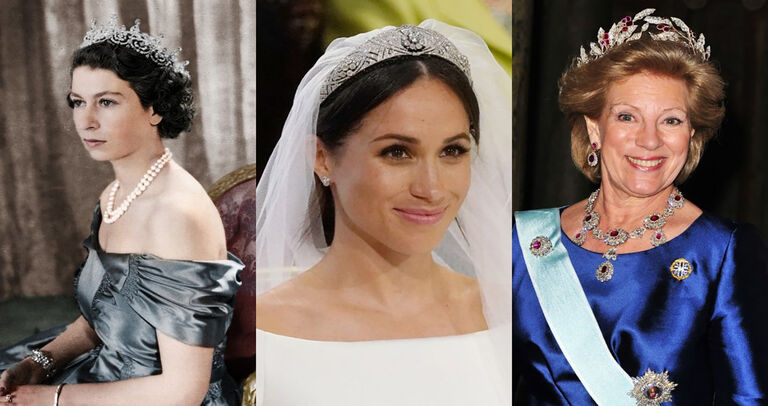The Hidden Histories Of The World’s Most Exquisite Royal Crowns And Tiaras

What comes to mind when you think of royalty? A sparkling, jewel-encrusted crown may be near the top of the list – a piece spectacular enough for a king or queen. But every piece of magnificent headwear comes with its own story, whether it's connected to a critical moment in royal history or a product of some unusual origins. You've undoubtedly seen many of these tiaras and crowns before, but you'll never look at them the same way once you know about the emotional weight they carry.
1. The Cartier Halo
Cast your mind back to 2011, and you may remember the splendid Cartier Halo tiara perched on Kate Middleton’s head as she tied the knot with Prince William. The future Princess of Wales had gotten the nod to wear the headgear from none other than Queen Elizabeth — the owner of the piece at that time. And, originally, the Cartier Halo had belonged to Elizabeth’s mother. We certainly wouldn’t mind that kind of hand-me-down...
2. St. Edward’s Crown
One of Vyner’s creations was the St. Edward’s Crown, which was to be worn during Charles II’s coronation. The original crown worn on such occasions — which had likely been created during the 11th century — had been reduced to puddles of metal and precious stones in 1649. Now the St. Edward’s Crown would be used for the coronation of every subsequent English and later British monarch.
3. The Aquamarine Bandeau
Princess Madeleine of Sweden owns this unusual bandeau tiara. It’s a piece that dates back to at least the ’60s, although it could be even older. Either way, Madeleine was given it for her 18th birthday and frequently wears it in public. But, sadly, not everyone’s a fan. It’s said, in fact, that some royal followers have nicknamed the tiara “the Cyclops” — and one look at the shining jewel in the center tells you why.
4. The Burmese Ruby
Proving that even royals recycle, this magnificent headpiece was once part of Queen Elizabeth II’s vast collection. But what people may not know, is that it was actually fashioned from another tiara: the Nizam of Hyderabad. And as its name suggests, the stunning headwear features a whole lot of rubies — 96 of them, in fact. These were presented to Elizabeth by the people of Burma, along with the belief about the protective properties of the stones.
